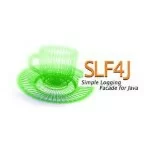Simple REST client in Java
1. Using Apache HttpClient
The Apache HttpClient library simplifies handling HTTP requests. To use this library you have to download the binaries with dependencies from their website.
Here is the code for HTTP GET method:
01 02 03 04 05 06 07 08 09 10 11 12 13 14 15 16 17 18 19 20 | import java.io.BufferedReader;import java.io.IOException;import java.io.InputStreamReader;import org.apache.http.HttpResponse;import org.apache.http.client.ClientProtocolException;import org.apache.http.client.HttpClient;import org.apache.http.client.methods.HttpGet;import org.apache.http.impl.client.DefaultHttpClient;public class Test { public static void main(String[] args) throws ClientProtocolException, IOException { HttpClient client = new DefaultHttpClient(); HttpResponse response = client.execute(request); BufferedReader rd = new BufferedReader (new InputStreamReader(response.getEntity().getContent())); String line = ''; while ((line = rd.readLine()) != null) { System.out.println(line); } }} |
And for Post method; for sending simple string in post:
01 02 03 04 05 06 07 08 09 10 11 12 13 14 15 16 17 18 19 20 21 22 23 | import java.io.BufferedReader;import java.io.IOException;import java.io.InputStreamReader;import org.apache.http.HttpResponse;import org.apache.http.client.ClientProtocolException;import org.apache.http.client.HttpClient;import org.apache.http.client.methods.HttpPost;import org.apache.http.entity.StringEntity;import org.apache.http.impl.client.DefaultHttpClient;public class Test { public static void main(String[] args) throws ClientProtocolException, IOException { HttpClient client = new DefaultHttpClient(); StringEntity input = new StringEntity('product'); post.setEntity(input); HttpResponse response = client.execute(post); BufferedReader rd = new BufferedReader(new InputStreamReader(response.getEntity().getContent())); String line = ''; while ((line = rd.readLine()) != null) { System.out.println(line); } }} |
You can also send full JSON or XML of a POJO by putting String representing JSON or XML as a parameter of StringEntity and then set the input content type. Something like this:
1 2 | StringEntity input = new StringEntity('{\'name1\':\'value1\',\'name2\':\'value2\'}'); //here instead of JSON you can also have XMLinput.setContentType('application/json'); |
For JSON you can use JSONObject to create string representation of JSON.
1 2 3 4 | JSONObject json = new JSONObject();json.put('name1', 'value1');json.put('name2', 'value2');StringEntity se = new StringEntity( json.toString()); |
And for sending multiple parameter in post request:
01 02 03 04 05 06 07 08 09 10 11 12 13 14 15 16 17 18 19 20 21 22 23 24 25 26 27 | import java.io.BufferedReader;import java.io.IOException;import java.io.InputStreamReader;import java.util.ArrayList;import java.util.List;import org.apache.http.HttpResponse;import org.apache.http.client.ClientProtocolException;import org.apache.http.client.HttpClient;import org.apache.http.client.entity.UrlEncodedFormEntity;import org.apache.http.client.methods.HttpPost;import org.apache.http.impl.client.DefaultHttpClient;import org.apache.http.message.BasicNameValuePair;public class Test { public static void main(String[] args) throws ClientProtocolException, IOException { HttpClient client = new DefaultHttpClient(); List nameValuePairs = new ArrayList(1); nameValuePairs.add(new BasicNameValuePair('name', 'value')); //you can as many name value pair as you want in the list. post.setEntity(new UrlEncodedFormEntity(nameValuePairs)); HttpResponse response = client.execute(post); BufferedReader rd = new BufferedReader(new InputStreamReader(response.getEntity().getContent())); String line = ''; while ((line = rd.readLine()) != null) { System.out.println(line); } }} |
2. Using Jersey
Jersey is the reference implementation forJSR-311 specification, the specification of REST support in Java. Jersey contains basically a REST server and a REST client. it provides a library to communicate with the server producing REST services. For http get method:
01 02 03 04 05 06 07 08 09 10 11 12 13 14 15 16 17 18 19 | import java.io.IOException;import javax.ws.rs.core.MediaType;import javax.ws.rs.core.UriBuilder;import org.apache.http.client.ClientProtocolException;import com.sun.jersey.api.client.Client;import com.sun.jersey.api.client.WebResource;import com.sun.jersey.api.client.config.ClientConfig;import com.sun.jersey.api.client.config.DefaultClientConfig;public class Test { public static void main(String[] args) throws ClientProtocolException, IOException { ClientConfig config = new DefaultClientConfig(); Client client = Client.create(config); // getting XML data System.out.println(service. path('restPath').path('resourcePath').accept(MediaType.APPLICATION_JSON).get(String.class)); // getting JSON data System.out.println(service. path('restPath').path('resourcePath').accept(MediaType.APPLICATION_XML).get(String.class)); }} |
There are also other media formats in which you can get the response like PLAIN or HTML.
And for HTTP POST method:
01 02 03 04 05 06 07 08 09 10 11 12 13 14 15 16 17 18 19 20 21 22 23 | import java.io.IOException;import javax.ws.rs.core.MediaType;import javax.ws.rs.core.MultivaluedMap;import javax.ws.rs.core.UriBuilder;import org.apache.http.client.ClientProtocolException;import com.sun.jersey.api.client.Client;import com.sun.jersey.api.client.ClientResponse;import com.sun.jersey.api.client.WebResource;import com.sun.jersey.api.client.config.ClientConfig;import com.sun.jersey.api.client.config.DefaultClientConfig;import com.sun.jersey.core.util.MultivaluedMapImpl;public class Test { public static void main(String[] args) throws ClientProtocolException, IOException { ClientConfig config = new DefaultClientConfig(); Client client = Client.create(config); MultivaluedMap formData = new MultivaluedMapImpl(); formData.add('name1', 'val1'); formData.add('name2', 'val2'); ClientResponse response = webResource.type(MediaType.APPLICATION_FORM_URLENCODED_TYPE).post(ClientResponse.class, formData); System.out.println('Response ' + response.getEntity(String.class)); }} |
If you are using your POJO in the POST then you can do something like following:
1 2 3 | ClientResponse response = webResource.path('restPath').path('resourcePath').type(MediaType.APPLICATION_JSON).accept(MediaType.APPLICATION_JSON).post(ClientResponse.class, myPojo);System.out.println('Response ' + response.getEntity(String.class)); |
Here myPojo is an instance of custom POJO class.
You can also use Form class from Jersey to submit multiple parameters in POST request:
01 02 03 04 05 06 07 08 09 10 11 12 13 14 15 16 17 18 19 20 21 22 23 | import java.io.IOException;import javax.ws.rs.core.MediaType;import javax.ws.rs.core.UriBuilder;import org.apache.http.client.ClientProtocolException;import com.sun.jersey.api.client.Client;import com.sun.jersey.api.client.ClientResponse;import com.sun.jersey.api.client.WebResource;import com.sun.jersey.api.client.config.ClientConfig;import com.sun.jersey.api.client.config.DefaultClientConfig;import com.sun.jersey.api.representation.Form;public class Test { public static void main(String[] args) throws ClientProtocolException, IOException { ClientConfig config = new DefaultClientConfig(); Client client = Client.create(config); Form form = new Form(); form.add('name1', 'value1'); form.add('name2', 'value1'); ClientResponse response = service.path('restPath').path('resourcePath'). type(MediaType.APPLICATION_FORM_URLENCODED).post(ClientResponse.class, form); System.out.println('Response ' + response.getEntity(String.class)); }} |
Happy coding and don’t forget to share!
Reference: Simple REST client in java from our JCG partner Harsh Raval at the harryjoy blog.







The Fluent API which is part of the Http Client 4.x lib is also pretty good
This indeed is helpful. Thanks Harsh.
Your tutorial is really helpful but please give the link of the JAR’s to use along with the code.
Thanks Harsh. It is useful to me
Try looking at http-rest-client
https://github.com/g00dnatur3/http-rest-client
Here is a simple example:
RestClient client = RestClient.builder().build();
String geocoderUrl = “http://maps.googleapis.com/maps/api/geocode/json”
Map params = Maps.newHashMap();
params.put(“address”, “beverly hills 90210”);
params.put(“sensor”, “false”);
JsonNode node = client.get(geocoderUrl, params, JsonNode.class);
Cheers!
In section 2. the line for GET calls in XML and JSON format respectively, seems to have been switched.
Its working ,Code is accurate….
Excellent Post.. one last stop to all query related rest api, Thanks Harsh, Keep posting good technical blog content.
Hi Thanks for the post. Its works just fine. I am using your HTTP get and post.
In your : ” sending simple string in post: ” How can I send source frame as source data? Thanks
Alchemy-HTTP is a really nice library for making Web calls from Java
https://github.com/SirWellington/alchemy-http
From the ReadMe:
Coffee myCoffee = http.go()
.get()
.expecting(Coffee.class)
.at(“http://aroma.tech/orders?orderNumber=99”);
Hi Thanks for the post. Excellent.
DefaultHttpClient is deprecated.
It is better to use HttpClientBuilder:
HttpClient httpClient= HttpClientBuilder.create().build();
Hi!
It’s a clear post and helpful!
Thanks a lot!
I am very new to java. Please let me know how to solve the issue . When i try to run below code , I get error import org.apache.http. cannot be resolved. How to overcome this. I have just typed in eclipse import java.io.BufferedReader; import java.io.IOException; import java.io.InputStreamReader; import org.apache.http.HttpResponse; import org.apache.http.client.ClientProtocolException; import org.apache.http.client.HttpClient; import org.apache.http.client.methods.HttpGet; import org.apache.http.impl.client.DefaultHttpClient; public class myget1 { public static void main(String[] args) throws ClientProtocolException, IOException { HttpClient client = new DefaultHttpClient(); HttpGet request = new HttpGet(‘http://restUrl’); HttpResponse response = client.execute(request); BufferedReader rd = new BufferedReader (new InputStreamReader(response.getEntity().getContent())); String line = ”; while ((line = rd.readLine())… Read more »
@,
You need to add the libraries to your project first. Only then the imports will work.
The link to these libraries are mentioned at the very top of the post.
I am getting HTTP 401 response while calling rest api. Actually the rest api which i am calling requires HTTP authentication. So, can anyone help me with how i can pass my authentication credentials in the request?
i want a rest api call for https .. how certificate can enter into the picture?
Hi i am using REST API without JASON. I am using Put method to upload a document from java to SharePoint. how do i pass required metadata without Using JASON